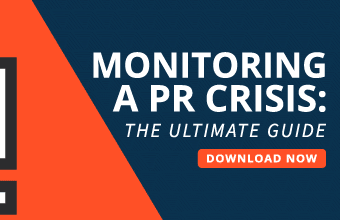Crises happen. And they happen when we least expect them. This is why it is so important to invest time, money and resources in prevention. While you can’t always prevent a crisis, you can always be prepared. A company that prepares its crisis management plan when the waters are calm is much more likely to weather the storm successfully.
How do you leverage data?
The success of crisis response will depend on several things, including how much data you have about social conversations.
This data is obtained through social listening tools that monitor keywords in millions of online channels. However, the amount of data we find online is overwhelming. So, how can we select the key information that will help us before and during a crisis. The below will help:
1) Make sure keywords you are monitoring are useful
Less is more. Avoid registering too many keywords. They will generate tons of information that may cause the important to get overlooked. The first word to monitor is your brand name. After that consider your main products, spokespersons, competitors, industry topics, etc.
If your brand is a well-known company, you can always use categories to help you better understand what is being talked about. For example, if you want to know what people are saying about a fast food company, one category could group mentions of a specific product, another about a new campaign, and another about similar products from competitors.
Social listening platforms are great allies for this task, but during a crisis, human intervention is key to analyze the information, interpret it and generate reports that will be the basis for the corresponding action plan. Therefore, it is important that within the digital marketing team, there is always a person responsible for monitoring the data, analyzing it and detecting any possible signs of crisis.
2) Set up real-time alerts
We are living in an age of immediacy. Events scales quickly. So, setting real-time alerts for key terms is important. Once the person designated to monitor the data receives them, he or she should assess the situation, draw some conclusions about audience sentiment and inform the rest of the team about potential scenarios.
From then on, monitoring should be intensified and reporting on the situation should be done every hour for the first 24 hours. These reports should be shared with the company’s crisis committee to take immediate action to mitigate the impact.
3) Analyze
If you notice that your brand is linked with negative conversations and they are growing rapidly in a short time period, you should evaluate the need to act immediately.
Similarly, if you are already in a crisis, analyzing the sentiment will help you measure the effectiveness of your crisis communication.








